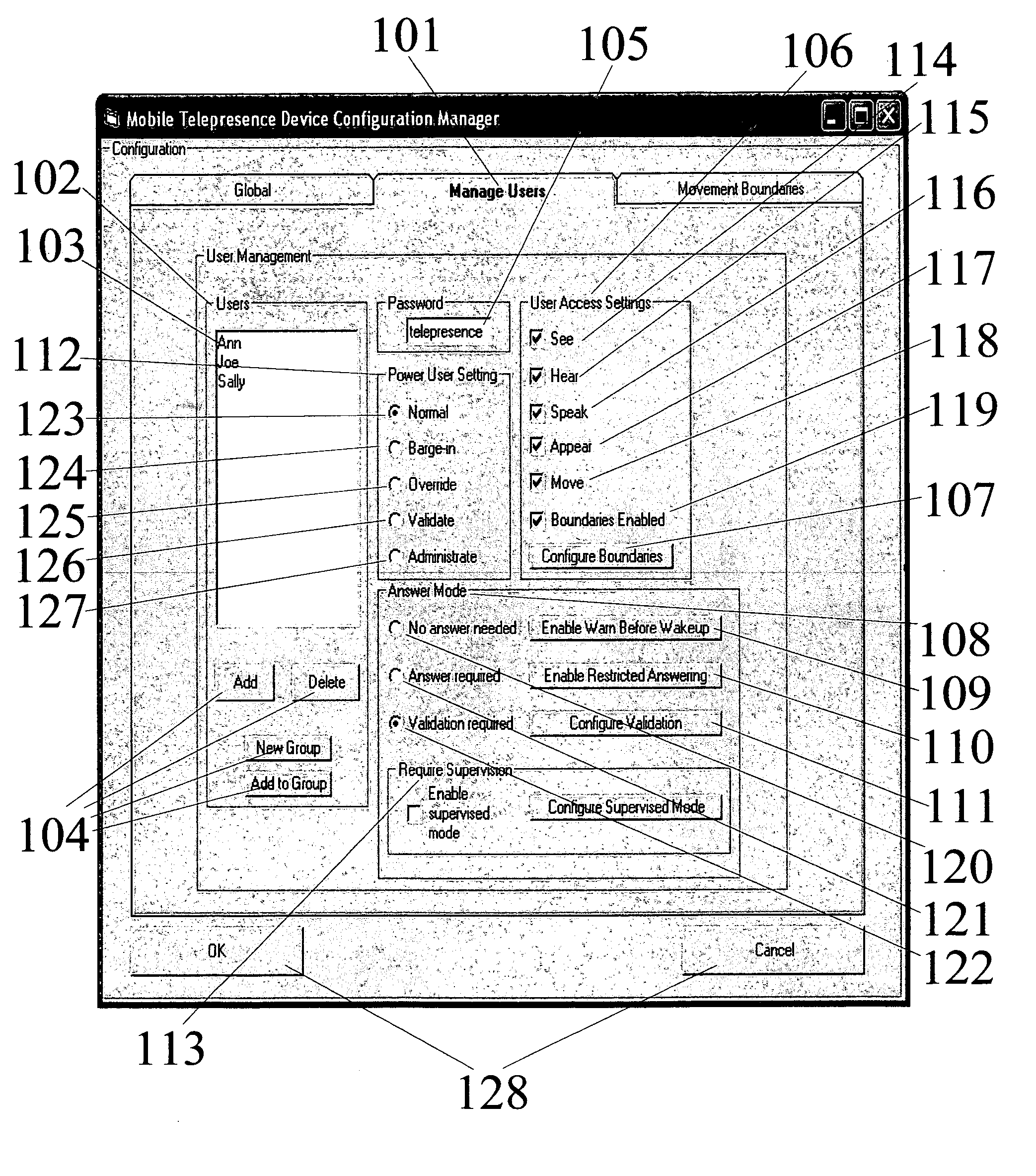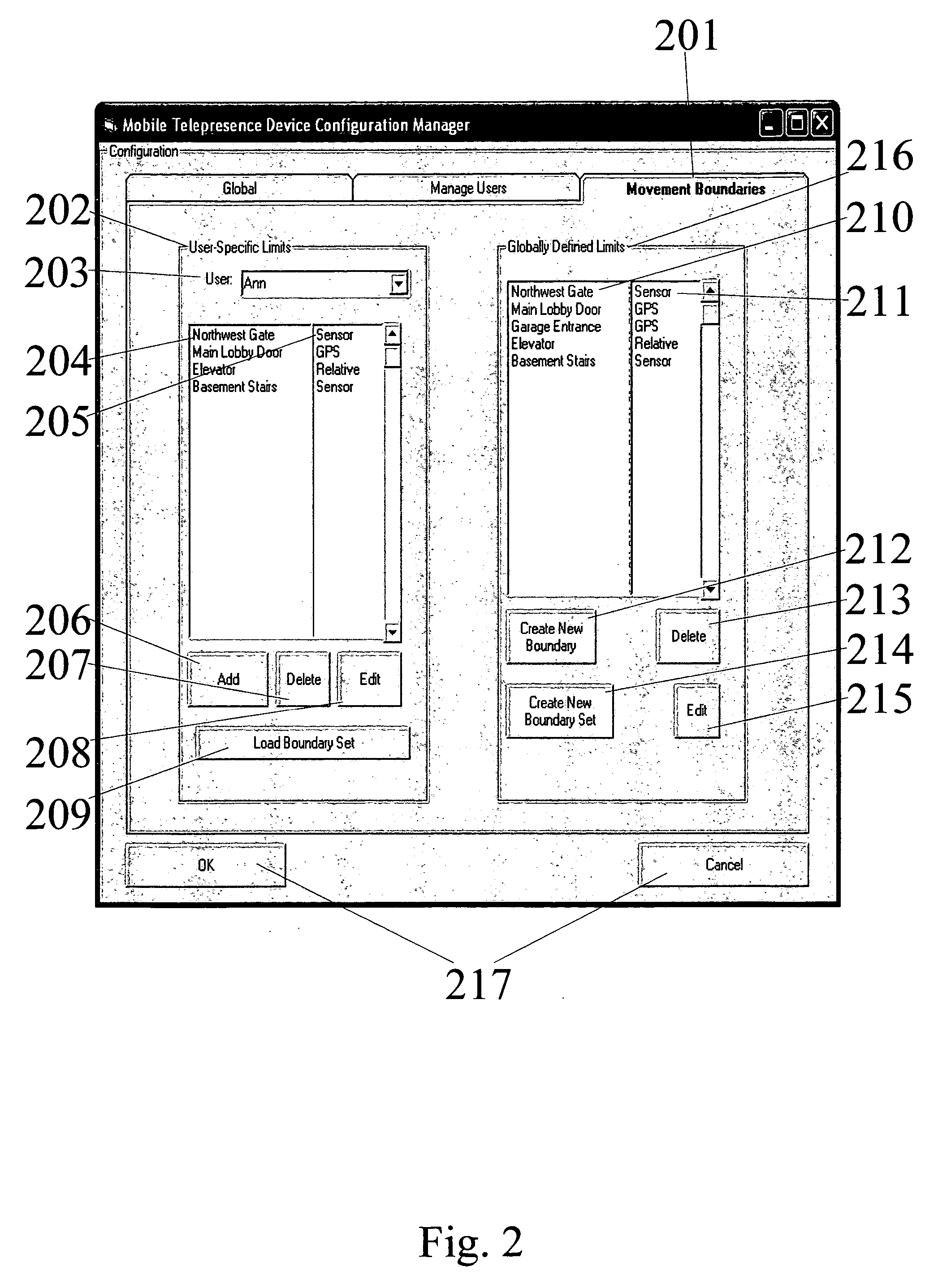Mobile video teleconferencing authentication and management system and method
- Summary
- Abstract
- Description
- Claims
- Application Information
AI Technical Summary
Benefits of technology
Problems solved by technology
Method used
Image
Examples
example application # 1
EXAMPLE APPLICATION #1
[0086] A consumer buys an MVTD and places it in his house so that he can check that everything is fine in the house. For example, he might check that his pet has food and water, and that the oven was turned off. He calls the MVTD and logs in with the ‘admin’ username and password. This username and password combination is configured to grant the user full access rights. Upon logging in he has full access to see, hear, and control the MVTD. The consumer need not wait for a local user to answer the MVTD in this scenario.
example application # 2
EXAMPLE APPLICATION #2
[0087] A manager buys an MVTD so that she can monitor the performance of her employees at a factory. Having the MVTD give a warning (visual and / or audible) that it is about to begin seeing / hearing would be appropriate in most cases, as this would lessen the feeling among the employees that he is spying on them. This could be enforced at the hardware level to make employees more at ease. The same effect can also be easily realized by keeping the docking station far from the employees to be watched. This would be analogous to the regular situation between employee and employer, where the employee usually has warning that the employer is on her way.
example application # 3
EXAMPLE APPLICATION #3
[0088] Alice wants to video teleconference with her mobility-impaired friend Lara. She connects to the MVTD from her terminal, which then causes the MVTD to give Lara a visual and / or audible signal that someone is trying to connect. Optionally, the MVTD also signals the identity of the person requesting a video teleconference. Lara remotely accepts the ‘call’ through a remote answering device, similar to a remote control. This device could also show the identity of the caller. This device could also allow Lara to speak to and / or hear the caller. Alice, having been granted full control by Lara is able to steer the MVTD to Lara's location, where they are able to speak and see each other.
PUM
 Login to View More
Login to View More Abstract
Description
Claims
Application Information
 Login to View More
Login to View More - R&D
- Intellectual Property
- Life Sciences
- Materials
- Tech Scout
- Unparalleled Data Quality
- Higher Quality Content
- 60% Fewer Hallucinations
Browse by: Latest US Patents, China's latest patents, Technical Efficacy Thesaurus, Application Domain, Technology Topic, Popular Technical Reports.
© 2025 PatSnap. All rights reserved.Legal|Privacy policy|Modern Slavery Act Transparency Statement|Sitemap|About US| Contact US: help@patsnap.com



